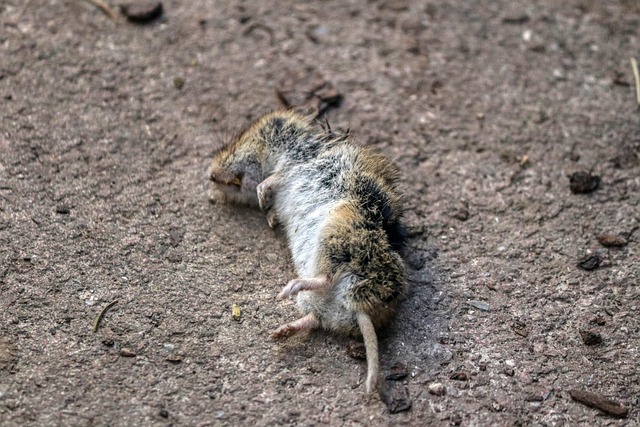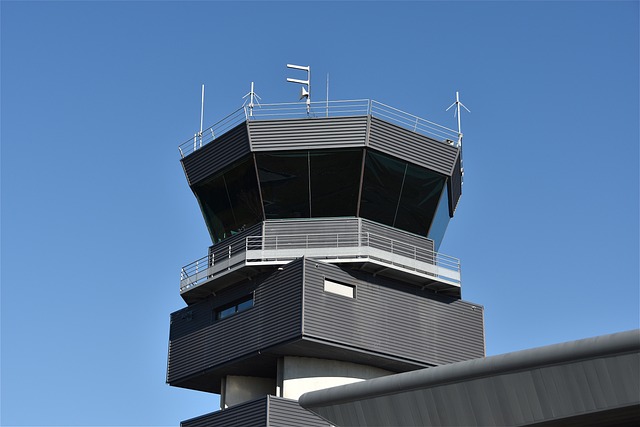Commercial rodent control is a specialized service addressing infestations in businesses like warehouses, offices, restaurants, and retail stores. It involves tailored strategies to prevent rodents from entering and thriving, including identifying entry points, regular inspections, sealing gaps, maintaining hygiene, and employing advanced tools. The ultimate goal is an inhospitable environment for pests while ensuring safety and environmental well-being. Proactive measures like regular cleaning, sanitation, and sealing entry points significantly reduce the risk of infestation. Modern methods include Integrated Pest Management (IPM) with non-toxic repellents, habitat modification, and monitoring systems. Both chemical and non-chemical methods prioritize human, pet, and environmental safety, with strict adherence to legal guidelines essential for compliance. Effective rodent control demands a strategic multi-faceted approach, including inspections, sealing areas, cleaning, traps, monitoring, seasonal adjustments, and professional intervention.
Commercial rodent control is a critical aspect of maintaining a healthy and productive workspace. This comprehensive guide delves into the essentials of managing rodents in commercial settings, from identifying common pests to understanding their significant impact on businesses and public health. We explore effective prevention strategies, traditional vs modern control methods, safe chemical and non-chemical solutions, legal considerations, best practices for implementation, and long-term strategies for maintaining a rodent-free environment. Discover expert tips and essential knowledge for robust commercial rodent control.
Understanding Commercial Rodent Control: The Basics

Commercial rodent control is a specialized service designed to prevent, eliminate, and manage rodent infestations in commercial spaces such as warehouses, offices, restaurants, and retail stores. It goes beyond simple home remedies, employing professional strategies tailored to minimize the risk of rodents infiltrating and thriving in these environments. The primary goal is to create an inhospitable atmosphere for rodents using a combination of prevention techniques, traps, and sometimes, rodenticides.
Effective commercial rodent control starts with identifying entry points and potential hiding spots. It involves regular inspections, sealing gaps, and maintaining excellent hygiene practices. Trained professionals use advanced tools like high-tech traps and baited systems that target specific species while minimizing harm to non-target animals and the environment. This comprehensive approach ensures not just the removal of existing rodents but also prevents future invasions.
Common Pests: Identifying Rodents in Your Commercial Space

Rodent control is a significant concern for commercial spaces, as rodents can cause extensive damage to property and pose serious health risks. Identifying common pests like rats and mice early on is crucial for effective rodent control. These mischievous intruders are often attracted by food sources, water, and shelter within commercial buildings. Signs of their presence may include droppings, gnaw marks, and strange noises in walls or ceilings.
Regular inspections can help business owners detect rodent activity promptly. Commercial spaces with ample storage areas, loading docks, or outdoor trash receptacles are particularly vulnerable. Once identified, understanding the behavior and habitats of these pests is essential for implementing tailored rodent control strategies. Professional pest control services offer specialized knowledge and tools to address the issue effectively while ensuring the safety and well-being of occupants and the environment.
The Impact of Rodents on Businesses and Health

Rodents can significantly impact businesses and public health, making effective rodent control crucial for any commercial operation. These pests cause extensive damage to structures by gnawing on wires, insulation, and building materials, leading to costly repairs and potential safety hazards. Moreover, rodents are known carriers of various diseases, including salmonella, leptospirosis, and plague, which can pose serious risks to employees and customers alike.
In commercial settings, the presence of rodents can lead to unsanitary conditions, as they leave behind droppings and urine that can contaminate food sources and surfaces. This not only negatively affects the reputation of a business but also results in increased cleaning and sanitization costs. Implementing robust rodent control measures is essential to maintain a safe, healthy, and productive work environment.
Prevention Strategies: Keeping Rodents at Bay

Rodent control is easier and more effective when proactive measures are in place. Prevention strategies play a crucial role in keeping rodents at bay. Regular cleaning and sanitation are fundamental; eliminating food sources and maintaining a clean environment significantly discourages rodent infestations. Sealing entry points, such as gaps in walls, floors, and ceilings, is another vital step. This physical barrier prevents rodents from finding their way inside.
Additionally, proper storage of foods in airtight containers and the use of pest-repellent plants or scents can act as natural deterrents. Regularly trimming trees and shrubs near buildings, as well as clearing debris and potential hiding spots, creates an environment less appealing to rodents. These combined efforts create a robust defense mechanism against rodent intrusion, serving as the first line of defense in effective rodent control.
Traditional vs Modern Rodent Control Methods

In the realm of rodent control, traditional methods have long been the go-to solution, involving chemical pesticides and traps. These conventional techniques may have been effective in the past, but they come with drawbacks such as health risks for humans and potential environmental contamination. Today, however, modern rodent control methods offer a more nuanced and sustainable approach.
Advancements in technology and an increased focus on eco-friendly practices have led to innovative solutions like integrated pest management (IPM) strategies, which emphasize the use of non-toxic repellents, habitat modification, and advanced monitoring systems. These modern techniques not only ensure effective Rodent Control but also prioritize the well-being of both humans and the ecosystem, making them a preferred choice for commercial properties aiming to maintain clean and safe environments.
Safe and Effective Chemical & Non-Chemical Solutions

When it comes to rodent control, both chemical and non-chemical solutions offer effective ways to manage infestations while ensuring safety for humans, pets, and the environment. Chemical treatments, such as poisons and repellents, are potent tools, but their use requires caution due to potential health risks and ecological impact. These substances can be highly effective in targeting rodents, often providing fast results, but improper application or exposure can lead to negative consequences.
Non-chemical alternatives have gained popularity for their safety and environmental friendliness. This includes traps, physical barriers, and natural repellents. Traps are humane and allow for targeted removal of rodents without the use of chemicals. Physical barriers like sealing entry points and ensuring proper waste management prevent rodent access to buildings and food sources. Natural repellents such as peppermint oil or certain spices can also deter rodents due to their strong scents, offering a safe and odour-based solution for rodent control.
Legal and Safety Considerations for Rodent Management

When managing rodents, whether in commercial or residential settings, it’s paramount to prioritize legal and safety considerations. In many jurisdictions, rodent control practices are regulated to ensure the humane treatment of pests and protect public health. Professional exterminators must adhere to these guidelines, which often involve obtaining permits for certain chemicals and baits, as well as implementing strategies that minimize risks to non-target species and the environment.
Safety is a primary concern, with emphasis on using protective gear during treatments and ensuring proper ventilation. Certain rodenticides can be hazardous to humans, pets, and wildlife if not handled correctly. Legal and safety protocols also dictate the locations and methods of baiting and trapping, especially in areas frequented by children or domestic animals. Compliance with these regulations is crucial to maintain a safe environment and avoid legal repercussions for businesses engaged in commercial rodent control.
Best Practices for Implementing a Commercial Rodent Control Program

Implementing an effective commercial rodent control program requires a multi-faceted approach. The best practices involve integrating several strategies to create an impenetrable barrier against rodents. First, conduct thorough inspections to identify entry points and potential habitats. Once identified, seal off all accessible areas using sturdy materials like metal mesh or caulk. Regular cleaning and sanitation are paramount; eliminating food sources and proper waste management significantly reduces rodent attraction. Additionally, deploying robust traps and repellents in strategic locations can deter and capture rodents effectively.
Consistent monitoring is key to success. Regularly inspect premises for signs of rodent activity, such as droppings or gnaw marks. Promptly address any new infestations through professional intervention. Seasonal variations demand adaptability; adjusting control methods according to changing behavior patterns ensures year-round effectiveness. Employing a combination of these best practices will foster an environment hostile to rodents, thereby enhancing the safety and cleanliness of commercial spaces.
Maintaining a Rodent-Free Environment: Long-Term Strategies

Maintaining a rodent-free environment requires long-term strategies that go beyond immediate solutions. Commercial rodent control experts emphasize the importance of sealing entry points to prevent rodents from returning. This involves inspecting your property for any cracks, holes, or gaps and addressing them promptly. Regular cleaning and sanitation are also crucial; eliminating food sources and maintaining a clean environment discourages rodent infestation.
Additionally, proper waste management is essential in rodent control. Securely storing garbage in sealed containers and regularly emptying them reduces the risk of attracting rodents. Landscaping plays a significant role too; keeping vegetation trimmed and removing potential hiding spots near buildings can make your property less appealing to rodents. These strategies, combined with professional intervention when needed, ensure effective long-term rodent control.
